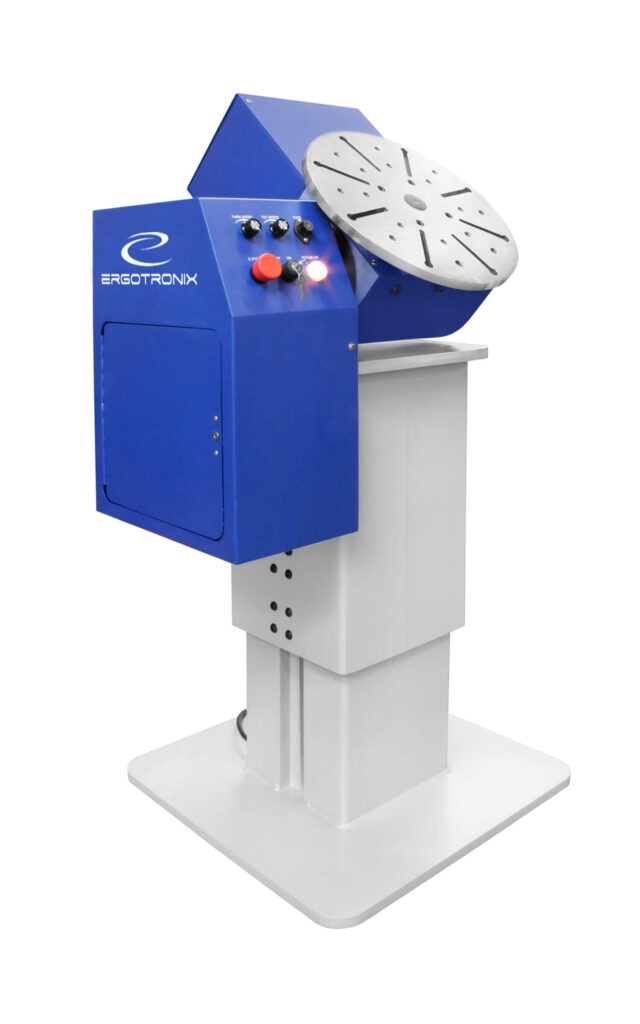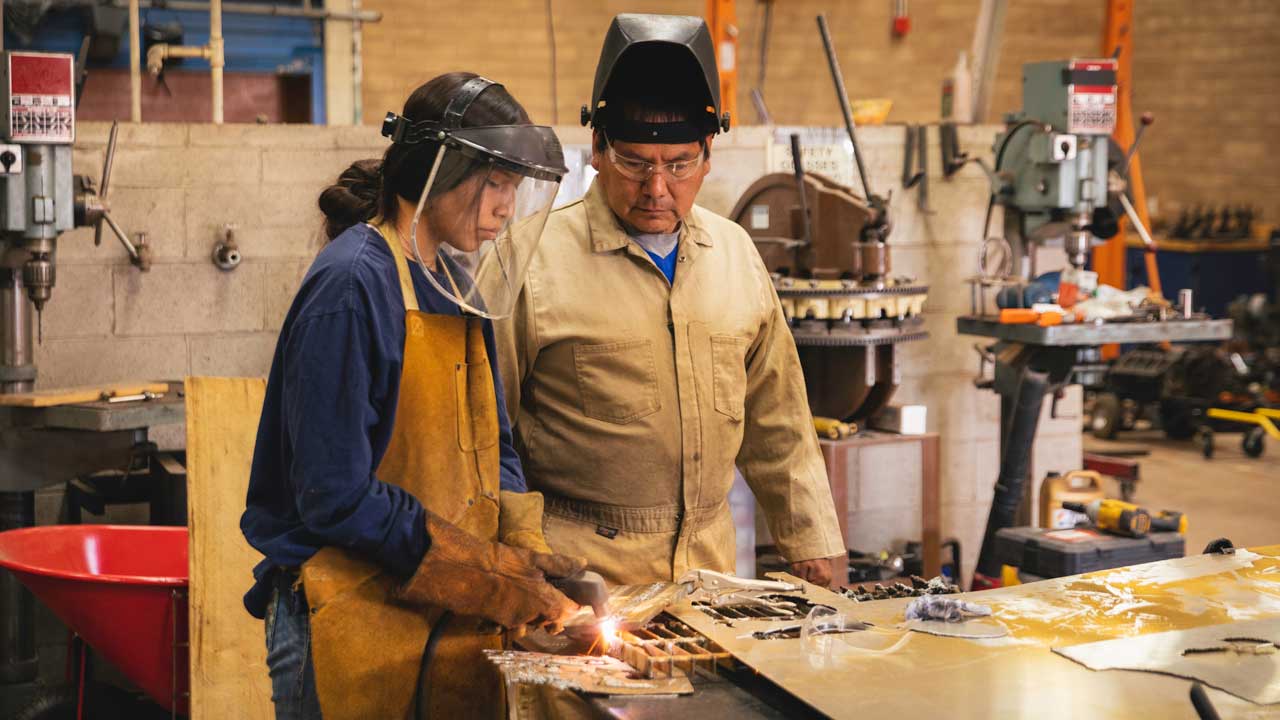The Benefits of Using Weld Manipulators in Industrial Applications
At Ergotronix, we understand the critical role of welding in industrial applications and the increasing demand for efficiency and precision. Our weld manipulators are designed to meet these challenges, enhancing productivity and quality in your operations. As we explore the benefits of these innovative tools, it’s important to consider how they can transform your production processes.
Let’s delve into the specifics of how weld manipulators and work positioners can benefit your industrial applications. What do you need to know about weld manipulators? Then, contact us to learn more about our industry-leading solutions.
What Are Weld Manipulators?
Weld manipulators are advanced mechanical systems designed to automate and enhance the welding process in manufacturing and industrial settings. These devices support and manipulate the welding head over a workpiece, allowing for precise and controlled welds across various applications. By stabilizing and positioning the welding equipment, manipulators reduce the need for manual handling, improving consistency in weld quality. They are particularly useful in environments that require high-volume or high-precision welding.
Weld manipulators vary in size and functionality, ranging from small, portable units to large, complex systems capable of handling massive structures. These systems can be outfitted with various welding heads and can perform both simple and complex movements. This adaptability makes them ideal for automotive, aerospace, and heavy manufacturing industries, where consistent quality and efficiency are paramount. Ergotronix offers a range of weld manipulators that can be integrated into existing workflows, enhancing both speed and safety.
Key Features of Weld Manipulators
Weld manipulators have a number of key features to note. They include:
- Precision Control: Provides exact control over the welding process, reducing the margin of error and ensuring high-quality welds.
- Extended Reach: Allows access to difficult-to-reach areas, minimizing the need for repositioning of heavy components.
- Programmable Settings: Offers customizable settings that can be programmed for specific tasks, increasing repeatability.
- Durability: Built to withstand tough industrial environments, ensuring long-term reliability and performance.
- Versatility: Compatible with various welding techniques, including TIG, MIG, and arc welding, making them suitable for a wide range of applications.
- Safety Features: Includes safety mechanisms to protect both the machinery and the operators, such as automatic shut-offs and emergency stops.
- User-Friendly Interface: Equipped with intuitive controls and interfaces, making it easy for operators to manage even complex welding tasks.
By choosing the right well manipulators to meet your needs, you can improve the efficiency of your staff and the final quality of your product.
Weld Manipulators: Top Benefits To Know
Weld manipulators offer a host of advantages that make them an invaluable asset in any industrial setting. A few key benefits to note include:
-
Improved Weld Quality
Weld manipulators deliver consistent pressure and precision, drastically reducing the occurrence of defects such as weld spatter and incomplete fusion. By automating the welding process, they ensure that each weld is performed to the highest standards. This consistency is crucial for industries where the strength and integrity of the weld are paramount. Moreover, the ability to program specific welding parameters helps maintain a uniform standard across multiple projects.
-
Increased Productivity
The automation provided by weld manipulators significantly speeds up the welding process. Operators can set up and execute multiple welds without the need for manual readjustments, allowing for faster completion of projects. This efficiency not only increases output but also allows workers to focus on other critical tasks, further enhancing productivity. Additionally, the quick setup and operation of weld manipulators reduce downtime between jobs.
-
Enhanced Worker Safety
By minimizing the need for manual handling of heavy welding equipment, weld manipulators reduce workplace injuries. They are especially beneficial in reducing exposure to hazardous fumes and the physical strain associated with welding tasks. The built-in safety features of these systems help prevent accidents, providing a safer environment for workers. This contributes to better compliance with health and safety regulations in the workplace.
-
Lower Operating Costs
Automating the welding process with manipulators helps reduce labor costs and minimizes waste material. By improving the accuracy of welds, the need for rework and material wastage
is significantly reduced. These savings become more pronounced over time, making weld manipulators a cost-effective investment for businesses looking to optimize their welding operations.
-
Greater Precision and Control
Weld manipulators provide exceptional control over the welding process, allowing for adjustments in speed, angle, and position. This level of control is particularly beneficial for complex or delicate welding tasks that require high precision. The ability to fine-tune the welding parameters ensures that even the most challenging projects are completed with accuracy.
-
Flexibility in Application
The versatility of weld manipulators means they can be used across various sectors and for different types of welding jobs. Whether it’s a large-scale construction project or intricate component manufacturing, these machines can be adjusted and programmed to meet diverse needs. This flexibility ensures that companies can maximize their use of weld manipulators across multiple production lines.
-
Reduction in Human Error
The programmable nature of weld manipulators means that once the desired parameters are set, the chance of human error is greatly diminished. This automation ensures that the welds are consistent throughout the production process, reducing discrepancies and the need for quality checks.
How To Integrate Weld Manipulators with Other Industrial Automation
If you select the right weld manipulators, you can integrate them with a number of your industrial automation processes. A few of the key steps involved in this process include:
- Assess Compatibility: Check that the weld manipulator is compatible with existing automation systems to ensure seamless integration.
- Plan Layout: Design the workflow and physical layout to optimize the interaction between the weld manipulator and other automated systems.
- Software Integration: Use compatible software that can communicate across different machines for coordinated operation.
- Training: Train staff on the interoperability of systems to ensure they can manage the integrated setup effectively.
- Safety Checks: Implement routine safety checks to ensure that all automated systems interact without posing risks to operators.
- Maintenance Protocols: Establish maintenance schedules that cover all integrated systems to prevent downtime and ensure longevity.
- Feedback Loop: Set up a feedback mechanism to continuously monitor and optimize the interaction between different automated systems.
Do not hesitate to reach out to professionals who can help you get the most out of your weld manipulators.
How To Choose the Right Weld Manipulators for Your Needs
With so many options out there, how can you choose the right weld manipulator to meet your needs? A few of the key points you need to keep in mind include:
- Define Requirements: Clearly outline the specific welding needs and challenges that the manipulator needs to address.
- Consider Load Capacity: Ensure the chosen model can handle the maximum load required for your operations.
- Evaluate Features: Look for key features that match your specific welding processes and preferences.
- Check Flexibility: Choose a manipulator that offers adaptability to different welding tasks and environments.
- Assess Technical Support: Opt for a supplier that provides excellent ongoing support and training.
- Calculate ROI: Consider the return on investment by evaluating the efficiency gains against the cost of the equipment.
- Request Demonstrations: Before making a final decision, see the equipment in action to ensure it meets your expectations.
By partnering with the right experts, you can ensure that you select the best weld manipulator for your industrial applications.
How Ergotronix Weld Manipulators Can Help You
At Ergotronix, we pride ourselves on supplying top-of-the-line weld manipulators that integrate cutting-edge technology with user-friendly designs. Our experts are committed to understanding your specific needs and helping you select the perfect solution that enhances both productivity and safety. With years of experience in ergonomic solutions, we ensure that our equipment meets the highest standards of quality and efficiency.
Furthermore, our customer service doesn’t stop at the sale. We provide comprehensive training, support, and maintenance services to ensure that your equipment continues to operate at peak performance long after your purchase. Partnering with Ergotronix means gaining a dedicated ally in your goal to optimize your manufacturing processes. Now, we would be honored to help you.
Ergotronix Can Put You in the Best Position To Succeed
Choose Ergotronix for your welding needs and benefit from our industry-leading technology and expertise. Our weld manipulators are designed to provide not only top-quality welds but also a safer and more efficient working environment. We want to help you get the most out of your most valuable assets. Contact us today to learn how our solutions can fit into your production line and help you achieve new levels of productivity and safety.




